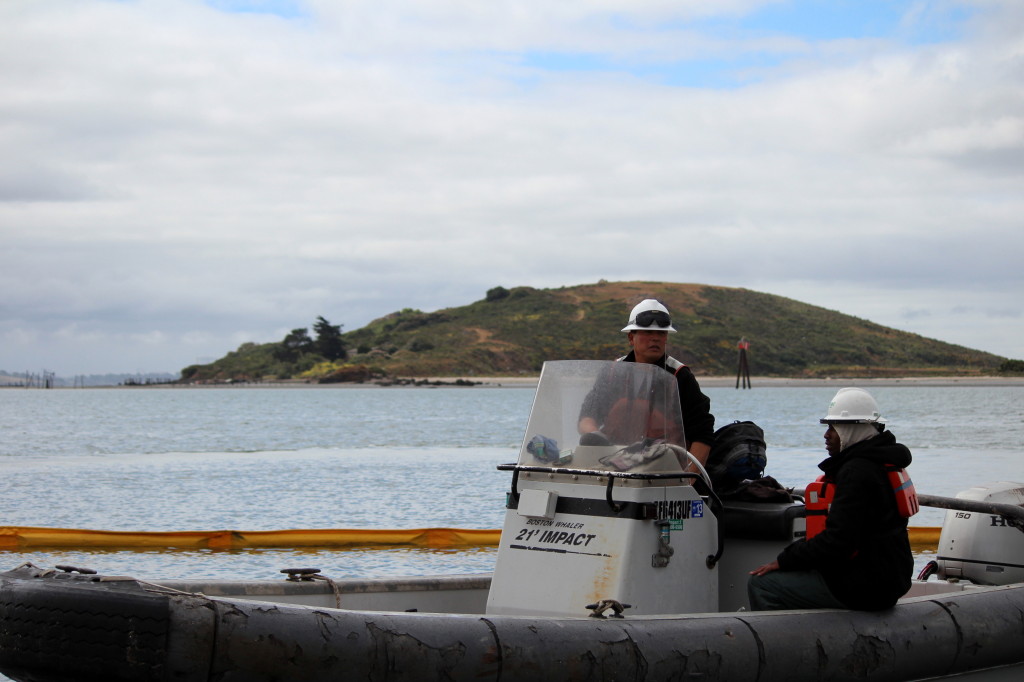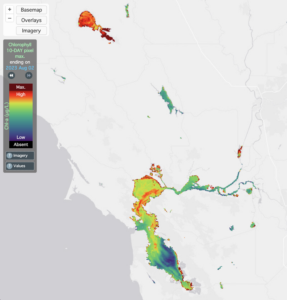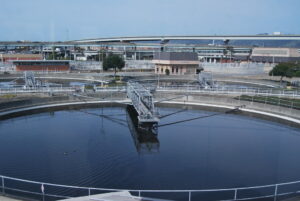On a gray morning in the Santa Fe Channel, a crew from the National Response Corporation are busy responding to an oil spill. They work quickly, loading yards of boom onto the back of a boat before getting the ‘okay’ to head into the bay.
Lucky for us, this is only a practice.
The California Department of Fish and Wildlife’s Office of Spill Prevention and Response (OSPR) regularly conduct oil spill response, equipment test and training days in vulnerable areas across the bay. On this particular day, boom — a common type of oil spill response equipment —was laid out to create a pocketed section of water and keep the oil from spreading.
“The boom floats on the water and there’s a piece of it that extends below and keeps it floating,” said staff scientist, Dave Price. “As you know, oil floats on the surface so that stuff does a pretty good job of intercepting the oil and keeping it from going where you don’t want it to.”
By containing the oil in a section of water, responders are then able to use a skimmer to separate and collect the oil from the water.
In a recent court settlement, the federal government is now required to analyze the effects of oil dispersants prior to their use in California (as well as Arizona and Nevada), to determine whether these toxins will harm endangered wildlife and their habitats. Dispersants have never been used in the San Francisco Bay due to the smaller nature of spills, and other response methods such as the statewide Sensitive Site Strategy Evaluation program have been developed to protect vulnerable areas from the oil itself.
“A sensitive site is basically a habitat that has wildlife such as threatened and endangered species,” said Price. “And the habitats themselves consist of marshes, wetlands, estuaries, lagoons and embankments where a lot of our wildlife is particularly vulnerable to marine oil spills.”
There are 600 environmentally sensitive sites along California’s coast, 260 of which are in the San Francisco Bay. Yards away from the Santa Fe Channel lies Brooks Island, home to nesting birds such as herons and egrets and an example of a sensitive site close to a major shipping hub.
“The first step you usually do if you have an oil spill like the Cosco Busan, is to try and contain the oil. A lot of the time you can’t,” said Price. “So immediately the spill response organizations, such as the Marine Spill Response Corporation and National Response Corporation, start putting their boats out with boom and using skimmers on the water to do oil spill response that way.”
It has been seven years since the last major oil spill, Cosco Busan, occurred in the San Francisco Bay and unfortunately, the odds are that it will not be the last. While images of oiled snowy plovers and tarnished sands are still in the minds of many, the recent court settlement paired with alternative strategies bring hope that the impact of future spills can be minimized.
[slideshow]
Read “Part 1: In California oil spills, chemical dispersants treated with caution” in Bay Nature’s series on oil spills in the San Francisco Bay.
Alessandra Bergamin is a Bay Nature editorial intern.





